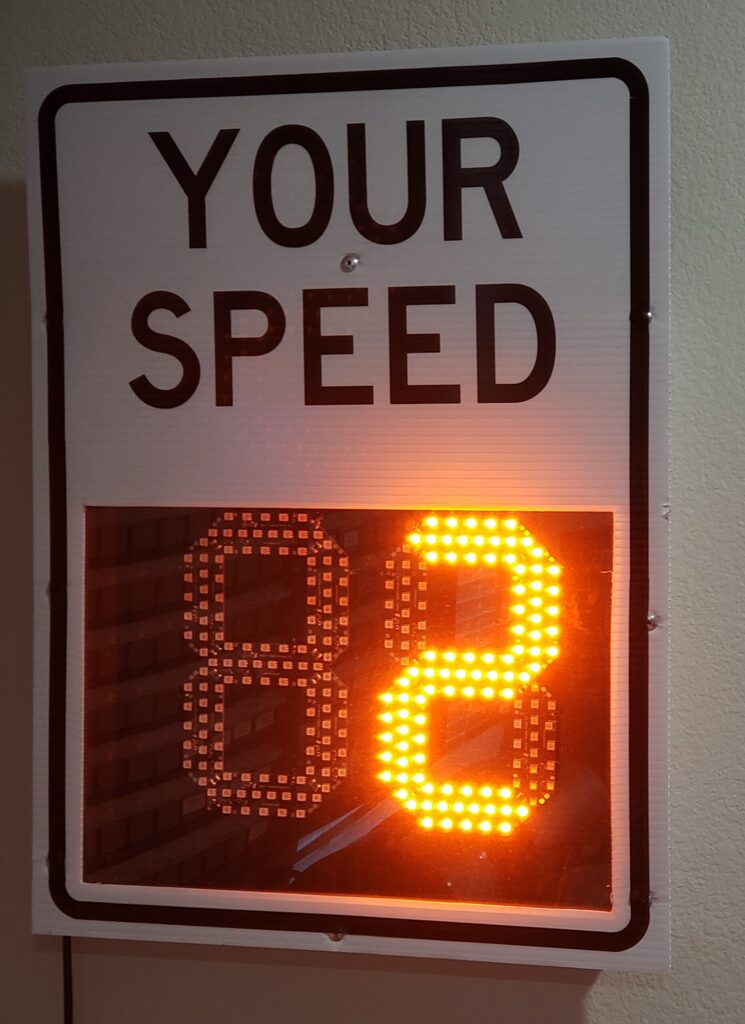DIY radar speed sign looks and works like the real thing

Those large, white speed signs you encounter alongside the road while driving can be annoying, as inattentive drivers slam their brakes right in front of you. However, the underlying technology that powers them is quite cool, which is why John McNelly wanted to construct his own DIY version that closely reflects the actual one.
McNelly’s design relies on an Arduino Nano and a Doppler radar module that sends out 10.525GHz radio pulses continuously and measures how much the reflected frequency has changed. Thinking back to that one high school physics class, you probably learned that as an object approaches, the reflected frequency will increase, whereas the frequency will decrease as the object gets further away. Using the Doppler effect, speed can be determined by subtracting the frequency coming from a custom pre-amplifier from the original signal.

The sign also uses a giant seven-segment display for showing the speed to passersby. Because using fourteen very bright LEDs is quite inefficient, McNelly opted to design and assemble his own PCBs that each hold eighteen amber LEDs, and all of the segments are controlled by a SPI shift register — one for each digit.
You can see from his video below that the sign is very similar to its real counterpart, as the digits are bright and the speed is measured accurately. For more details on the project, check out McNelly’s website and the code and design files on GitHub.
Leave a Reply
You must be logged in with your Arduino account to post a comment.